It’s likely that you’ve already heard of Coco Chanel either from her famous perfume, or the luxury clothing brand based on her name. As a woman trying to build a business in a time where the world was controlled by men, Chanel started at less-than-zero. And yet she found a way to climb to the position of being one of the most wealthy and powerful women in the world. On today’s Biographics, we are here to tell you the true rags-to-riches story of Coco Chanel.
Early Life
Gabrielle Chanel was born on August 19th, 1883 in France’s Loire Valley. Her mother, Eugénie Jeanne Devolle, was an unwed laundry woman. She gave birth to Gabrielle in a charity hospital run by nuns. On the day she was born, her mother had to write “traveling” where the father’s name should be. That wasn’t just an excuse for an absentee dad, though, because Albert Chanel traveled from town to town selling clothing to local peasants. Gabrielle had one older sister, Julia, and they were less than a year apart. The couple had their hands full with two infant daughters, and they could hardly scrape by with what money they had.
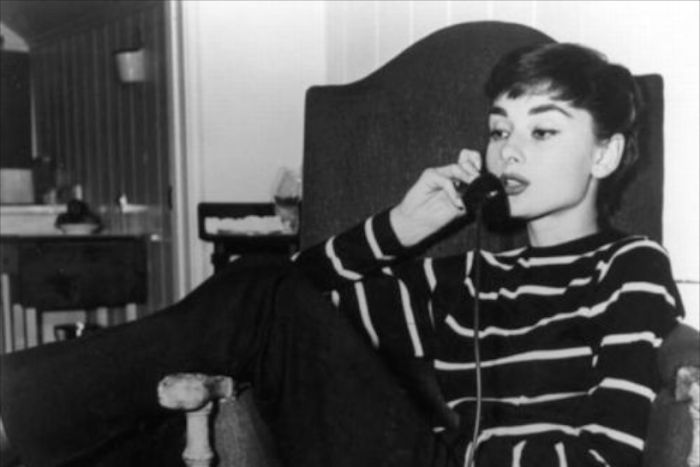
In 1884, Albert and Jeanne’s family gave them money so that they could pay for a marriage license. After their union was official, they had several more children, and the family all lived in a cramped one-room apartment in the town of Brive-la-Gaillarde.
Gabrielle learned how to sew at an early age to help her father with his clothing business. But when she was just 12 years old, Gabrielle’s mother became sick, and died. Raising young children is very much a full-time job, so he could not earn an income and take care of them at the same time. He sent his sons to work on a farm, and the girls were sent to a convent called Aubazine to be raised by nuns. The nuns taught her discipline, as well as how to read and write. She learned to carry herself with the grace and elegance of a lady, rather than a peasant.
Most of the other children living in the convent were orphans. But since her father was still alive, Gabrielle refused to consider herself an orphan, too. She held onto the hope that her father would return one day, and that they could be a family again. Books were a way for her to get lost in a world of fantasy.
She began to create elaborate stories about her own life, as well, to help ease the pain of her reality. Later in life, one of the most common stories she told her friends was how she was raised by her strict “Aunties”. She continued giving lies and half-truths about her past, which made it almost impossible for anyone to know just how difficult her childhood truly had been.
Becoming “Coco”
At age 18, Gabrielle left the convent to find a job. There were very few opportunities for women to find work, but she was lucky to have the sewing skills she learned from her father. She worked as a seamstress during the day, making clothing for rich ladies in the town of Moulins. This was a very solitary job, and she was hidden in a backroom working long hours mending and assembling garments. At night, she worked a second job at a nightclub, where she would sing and dance in front of a crowd. When she was 23, her act caught the attention of a man named Etienne Balsan. He was the wealthy heir to the Balsan garment company, which supplied the French army with its uniforms.
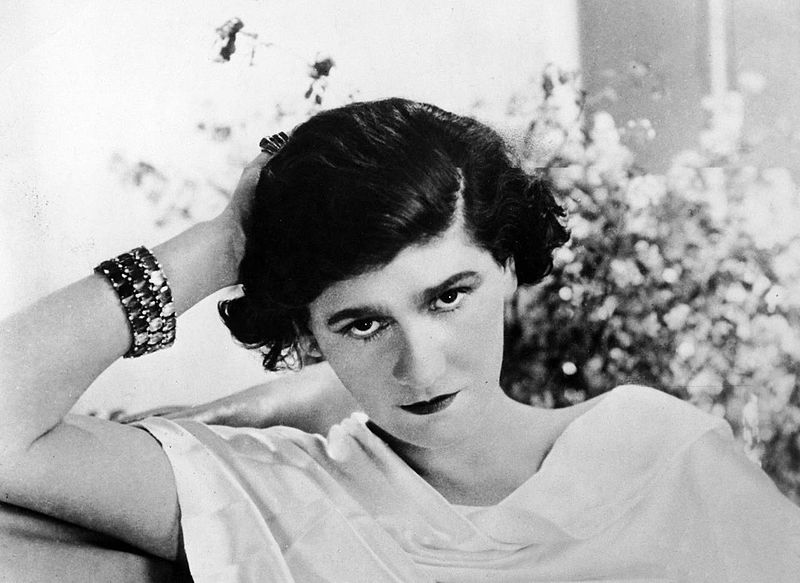
Gabrielle Chanel started going by the nickname “Coco”. Years later, even Chanel herself would tell everyone a different story of where the name came from. Some believe it was based on the lyrics of a song she used to sing. Others think it’s short for the French word “Cocotte”, which means “a kept woman”- or- in today’s slang, “sugar baby”. For someone in Gabrielle Chanel’s situation, these wealthy men were the only hope she had of escaping poverty.
Balsan had a “type”- which was aspiring actresses. The girlfriend who lived with him before Chanel was named Emilienne d’Alencon, and she went on to become rich and famous with her successful career in Paris. Gabrielle had no delusions about the relationship with Etienne Balsan, and she knew that by sleeping with him, he would help introduce her to the right people. But after a few auditions, it was clear that she just wasn’t cut out for show business.
She was staying at Balsan’s house in the country, the Chateau de Royallieu for a few days. The home was set in the middle of the forest, where Balsan enjoyed riding horses and hunting. When his guests came over for the weekend, he kept her like his dirty little secret, telling her to hide in one of the back bedrooms. This was infuriating for Chanel. It was clear that Balsan was willing to sleep with her, and yet he was ashamed to be seen with her in public.
Plenty of people would feel completely dejected by this whole situation. Instead of feeling defeated, this sparked a fire in Chanel. She wanted to prove that she was worthy of being at this party. The only problem was that the clothes she arrived in made it obvious that she was poor. So she took one of Balsan’s suits and cut it apart, tailoring it to fit her body perfectly. Then, she showed up to the party uninvited. She carried herself with confidence, while everyone’s heads turned to see this beautiful woman standing in a man’s suit.
When the guests asked why she was dressed like that, she casually said it was far more comfortable. Remember- this happened in the year 1906, so this was completely unheard of. Women were wearing corsets, long gloves, and multiple layers of skirts. At the party, Chanel was clever, and interesting to talk to. When she made new friends, she would make up elaborate stories about her past, just like she did as a young girl. She once said, “My life didn’t please me. So I created my life.”
Balsan was impressed by this stunt, so he allowed her to continue living at his Chateau, and she joined his inner circle of friends. He began to treat her to new clothes and jewelry, but she continued to use the fabric from Balsan’s discarded clothing to make herself outfits to wear, instead. For most women, adding layers of fabric, feathers, and jewels was a way to show off that they were married to someone who had a lot of money. Chanel thought these things were vulgar, and she didn’t care if a simple style made her look poor. She just wanted to be comfortable.
Soon enough, other women began to copy Coco’s style. Looking at photos of Chanel in her youth, it’s almost as if they were taken today, or like she was a time traveler sent back a hundred years. Years later, she was quoted saying, “In order to be irreplaceable, one must be different.”
During World War I, women everywhere began to wear pants, because they had to work while their husbands were away. But by the time the men returned, they wanted their wives to go back to wearing dresses. Of course, women in the upper class never had to work at all. So they never stopped wearing their corsets and layers of uncomfortable fabric. If Coco Chanel was going to convince them to change, it would happen in stages, and over a very long period of time.
Love.
When she was 26 years old, Gabrielle met an English businessman named Arthur Capel at one of Etienne Balsan’s parties. Everyone called him “Boy”, because he was the illegitimate son of an aristocrat. He worked his way up in the world to become a self-made man. Out of everyone in Balsan’s inner circle, he was one of the only people who actually worked for a living.
Chanel was not satisfied to sit around and do nothing all day like other kept women. She was earning an income from selling custom-made hats to women who admired her style, but she kept the money in cash. At the time, women could not own businesses, rent an apartment, or even have bank accounts without a guarantor, which was usually the father or husband. Arthur Capel could see that Gabrielle Chanel was a genius, and he believed in her long before anyone else did. He encouraged her to open a shop, and helped her by putting his name on everything.
Gabrielle ran the business entirely on her own, and began hiring women to help increase production. Boy and Coco were a perfect pair, because they were both passionate about each of their respective businesses, and had mutual respect for one another. Arthur Capel used his experience to help look over contracts and negotiate the business deals, but the rest was all on her. Even before opening her first shop, Chanel already had loyal clientele from Paris, so it became successful right out the gate, and she began seeing profits almost immediately.
Boy and Coco used the money to purchase a lavish townhouse in Paris, which doubled as the fashion studio. The whole of the ground floor was an open space filled with the workshop. She created jobs for women in the local area, and her staff was growing all the time. Upstairs, she kept an apartment, and whenever Capel was in Paris, he lived there with her.
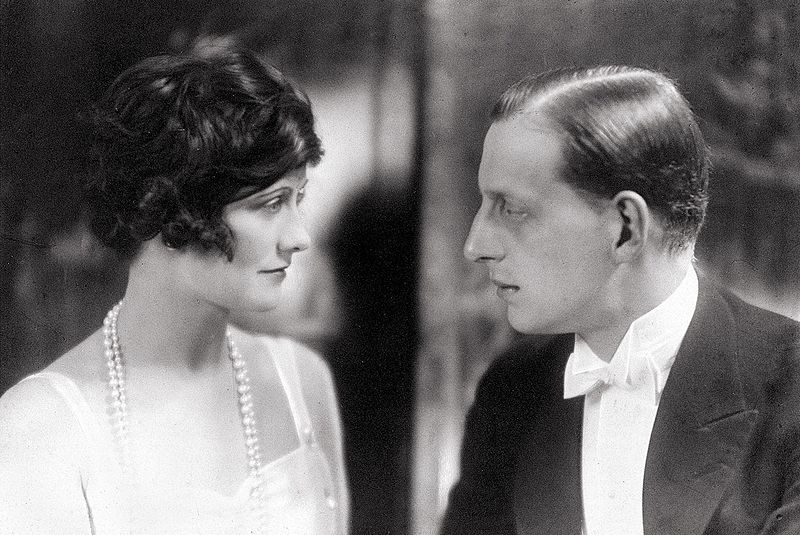
Dmitriy Pavlovich of Russia and Coco Chanel
But no matter what she did to prove her success, Coco Chanel could never be seen as the “marrying type” in the eyes of the aristocracy. As the member of a noble family, Arthur Capel was expected to end his affair and marry someone with a title. In 1918, he wed an English woman named Diana Wyndham, who was a widow, and related to an assortment of Earls and Dukes. But he and Chanel were still very much in love, and continued their relationship behind closed doors.
On December 22, 1919, Arthur Capel died in a car crash on his way to spend the holidays with Coco. His funeral was on Christmas Eve. They were together for 9 years, and Chanel planned to live out the rest of her life with him. She was just 35 years old when he died. Arthur Capel had been the love of her life, and no other man ever came close to replacing him.
Years later, her name would be known around the world, and those same aristocrats who refused to accept her would be fighting to wear her designs. There came a point in her life when her celebrity catapulted her to a place where she could have married anyone she wanted, but she never did. The one man she truly wanted to be her husband was gone forever. He knew her before, during, and after her success, and there was no way to replace that. But she had a resilience that helped her to keep going, no matter what. She said, “When you’re feeling sad, add more lipstick, and attack.”
Fashion
After the unexpected death of her beloved Boy, Coco Chanel needed to find a new business partner. At that time, she had over 300 employees. She was designing couture dresses that were selling for over 3,000 francs each. In today’s money, that’s more like $38,000 per dress, and she had an entire army of women making these things. You would think that this should have proven that she was more than capable of running a successful business. But nope- she was still a woman, so the banks refused to deal with her directly. It would become impossible for her to run her business on cash alone, and it was completely necessary for her to seek help from a male partner. The law banning women from opening bank accounts would not change until 1965, after the passing of the French Family Law.
This is when she met Pierre Wertheimer. He had a reputation for working together with other luxury brands around Paris, and he offered to be her business partner. The only issue was that Chanel knew nothing about law or business contracts. Arthur Capel always had her best interest at heart, and he gave her the freedom to run her business as she pleased, and keep her profits for herself. So, she was far too trusting, and unwittingly signed a contract that said that Pierre Wertheimer was entitled to take 90% of her business profits. Even though this contract was ridiculously unfair, it meant that Chanel could stay in business, and she did not let this setback get the best of her.
In 1921, Chanel began working with a celebrity perfume chemist named Ernest Beaux. At the time, women were wearing oils that had a single floral scent. She wanted to create a perfume with a layers which developed over time. This is when they created Chanel No. 5, and it became one of the best-selling perfumes in the world. For years to come, perfume and candle makers would copy the idea of mixing various scents together to create a unique experience.
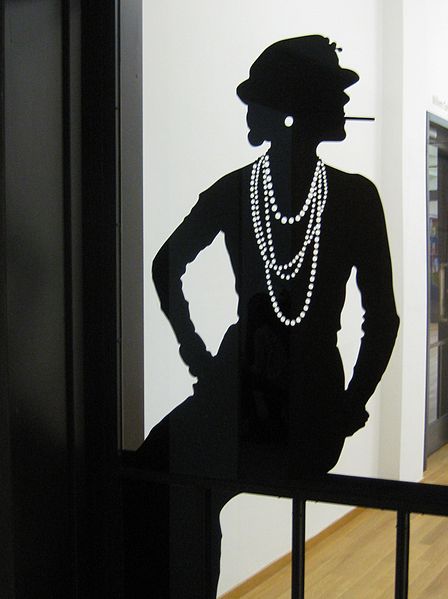
Before Chanel, women never wore black, unless they were in mourning. In the 1920’s, Vogue compared her iconic “little black dress” to Ford’s Model T. It was simple, elegant, and revolutionary. Soon enough, people around the world were looking to Chanel for inspiration. There was a ripple effect in women’s clothing in the rest of the world. Without Coco Chanel, there is no telling what kinds of clothes women would be wearing today. Years later, Chanel reflected on that time. “I gave women a sense of freedom. I gave them back their bodies: bodies that were drenched in sweat, due to fashion’s finery, lace, corsets, underclothes, padding.”
Despite the fact that she swore off ever marrying, Chanel continued to be in relationships with men. But no matter how powerful they may have been, she always stayed true to herself. She dated Grand Duke Dmitri Pavlovich, who was related to the Russian Romanov family. Next was Edward VIII, Prince of Wales. And before the dawn of World War II, she began a relationship with a German man named Baron Hans Gunther von Dincklage.
Looking at her track record, it would seem that she had a personal goal of trying to see if she could date at least one aristocrat from each country in Europe. But her decision to be in a relationship with Von Dincklage would become both a blessing, and a curse. Because just a few years later, the Nazi Party would rise to power, and Chanel’s lover would reveal his true colors.
War.
By the 1930’s, business was absolutely booming, and they needed all the space they could get in the House of Chanel. Her all-female staff increased to 300 workers, and it became necessary for Chanel to move out of the studio, and into the Hotel Ritz. At this point, Chanel had bought up several stores along a street called The Rue Cambon, which ran directly behind The Hotel Ritz.
In 1936, there was a labor movement in France, and workers were demanding better conditions across the country. On April 26th, Coco Chanel arrived at her studio to see that all 300 of her employees were sitting on the floor in protest. They all refused to work, unless their wages increased and their work hours lessened. Chanel was outraged, because she already paid these women higher wages and gave more vacation time than any other business. Instead of giving in to their demands, she fired all 300 of them on the spot, saying that they were ingrateful, and she could do the work on her own. But they refused to move. Finally, she gave in to their demands, for the sake of getting on with the work.
In 1939, Germany had occupied Poland, and Chanel knew it was only a matter of time before they were coming for France. It’s possible that her boyfriend, Hans Gunther von Dincklage let her know that the takeover was eminent. She laid off all 300 of her workers, and encouraged them to seek safety before it was too late. Coco Chanel was not going to leave her business, no matter what happened. Just three months later, Germany occupied France.
The Nazis destroyed businesses and homes of countless number of French people. The Nazis even took over the Hotel Ritz as their headquarters, so Chanel very literally had to live among them. Her home and business were both safe, so long as she continued to be in that relationship with Von Dincklage. But, knowing Chanel, she would have hated this. She never wanted to be beholden to any man, let alone the ones who thought they could rule the world.
The Nazis knew that she was close friends with the British royal family, so they asked if she would become one of their secret agents in 1943. She was given the code named “Model Hat”. On a trip with Von Dincklage, she met with Winston Churchill, and handed him a letter, which gave Germany’s demands for England’s surrender. Obviously, he didn’t take their offer, and it wouldn’t be surprising if he crumpled up the paper where he stood.
There is no way of knowing what was said between Churchill and Chanel. Was she actually a double-agent, divulging Nazi secrets? We will never know. But when the war was over, Chanel was never brought to trial for cooperating with the Nazis. She never spoke about that time, and buried it deep, like she did with all of the other unpleasant memories in her life.
Coco Chanel never said anything publicly that was Anti-Semitic. The only documented issue she ever had was with Pierre Wertheimer, who just so happened to be Jewish. After the Nazis occupied France, they were seizing any property that belonged to the Jews, and that included businesses. She wrote a letter to the Nazi government, asking if there was a chance that she could buy back the remaining 90% of House Chanel. However, the family temporarily sold their business entities to Christians during the war, and they had already fled to safety.
There are plenty of people who cannot forgive Coco Chanel for cooperating with the Nazis. But for a moment, put yourself in her shoes: She had two choices. Break up with her boyfriend, condemn the Nazis, and lose everything. Or, bite her tongue, and keep on pretending, for the benefit of maintaining the life she worked so hard to build. She chose life. And if she were alive today, she probably wouldn’t even bother to explain her decisions. In her own words, “I don’t care what you think of me. I don’t think about you at all.”
When the war was over in 1945, Chanel dumped Von Dinklage quicker than you can say “Auf Wiedersehen.” She moved on to having an affair with the Spanish artist Salvador Dali, which is an interesting choice, to say the least.
Legacy
When the war was over in 1945, Coco Chanel was 62 years old, and she no longer felt inspired to create new clothes. She chose to retire from the fashion world for years, and lived off of the royalties from the sales of her perfume.
In 1958, she found her second wind at the age of 75. She unveiled new designs, and reopened House Chanel. This sparked a resurgence in her brand’s popularity. Coco Chanel chose a man named Karl Lagerfeld to be her successor for the brand. She had more than enough money to retire and live a comfortable life, but she worked until the day she died on January 10th, 1971. When she died, she was 87 years old, and had an estimated net worth of $100 million.
Yes, this sounds like a lot of money, but keep in mind that Pierre Wertheimer’s grandsons still own 90% of Chanel, even to this very day. They are now multi-billionaires.
Today, many people think of Chanel as a brand that is intimidating and unattainable. But for those who look at the price tag, they miss the point. Coco Chanel was quoted saying on more than one occasion that she believed people should wear what makes them happy.
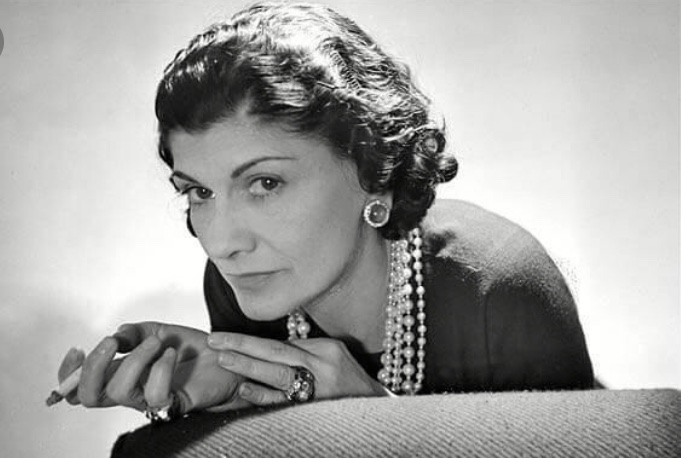
Wear the colors you feel great in, and the style that makes you feel comfortable. Instead of trying to be flashy or follow a trend, your attitude and the way you carry yourself speaks far more than the clothes on your back. She said, “Fashion is not something that exists in dresses only. Fashion is in the sky, in the street. Fashion has to do with ideas, the way we live, and what is happening.”
Now, before we end this video, I just wanted to say that our audience here on Biographics is only 13% female, and we look to these analytics when we decide what videos to make. If you’re a woman in the audience, please do subscribe, so we know you’re out there. And if you felt inspired by the story of Coco Chanel, please share this with someone in your life that you know would appreciate it, too. Thanks for watching.
Sources for the video description:
https://www.snopes.com/news/2017/03/06/coco-chanel-nazi-spy/
